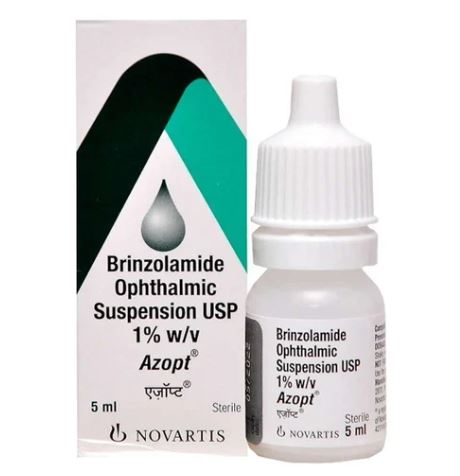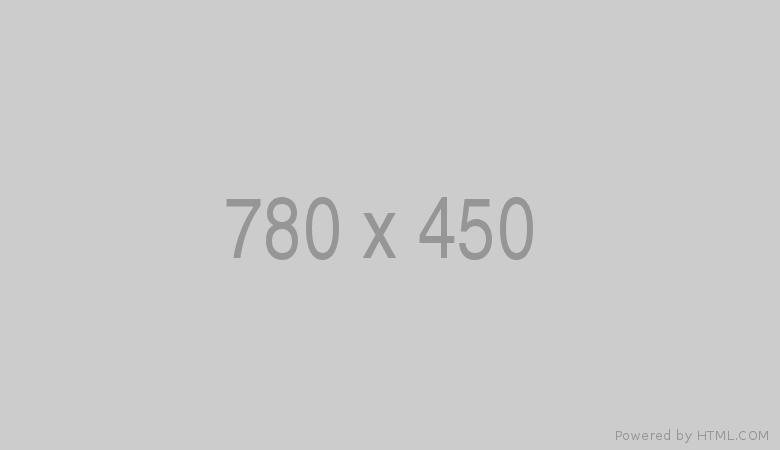
The Comprehensive Glaucoma Eye Drops List You Need
Glaucoma, a group of eye conditions that damage the optic nerve, is often linked to an increase in intraocular pressure (IOP). Managing IOP is crucial in glaucoma treatment to prevent vision loss. Eye drops play a vital role in this management by reducing eye pressure, thereby slowing the progression of the disease. Among the various classes of eye drops used, prostaglandin analogs have emerged as a first-line treatment due to their effectiveness in lowering IOP.
Here’s the total list of glaucoma eye drops:
Segment 1: Prostaglandin Analog Eye Drops
Prostaglandin analogs are a class of medications used in glaucoma management known for their efficacy in reducing intraocular pressure. These drugs work by increasing the outflow of aqueous humor, the fluid in the eye, thereby reducing IOP. They are often the first choice due to their potent effect and convenience of once-daily dosing.
Key examples include:
● Latanoprost (Xalatan) - Manufactured by Pfizer, Latanoprost is one of the most commonly prescribed eye drops for glaucoma. Its mechanism of action involves increasing the outflow of aqueous humor through the uveoscleral pathway, effectively reducing IOP.
.jpg)
● Travoprost (Travatan Z) - Produced by Alcon, Travoprost functions similarly to Latanoprost. It is particularly effective in patients who do not respond adequately to other IOP-lowering medications.

● Bimatoprost (Lumigan) - Allergan manufactures this prostaglandin analog, which not only increases uveoscleral outflow but may also enhance trabecular meshwork outflow, offering a dual mechanism of action.

● Rocklatan - A product of Aerie Pharmaceuticals, Rocklatan combines the prostaglandin analog latanoprost with netarsudil, an Rho kinase inhibitor, enhancing its IOP-lowering effect through multiple mechanisms.

● Tafluprost - Produced by Santen Pharmaceutical, Tafluprost is a preservative-free prostaglandin analog, making it a suitable option for patients with sensitivities to preservatives in eye drops.
.jpg)
● Zioptan (Tafluprost) - Manufactured by Akorn Pharmaceuticals, Zioptan is another preservative-free option, effective in patients who require or prefer a preservative-free formulation.
.jpeg)
The benefits of these prostaglandin analogs in reducing IOP are significant. They not only lower the risk of optic nerve damage but also offer the convenience of less frequent dosing compared to other classes of glaucoma medications. While they are generally well-tolerated, it's essential for patients to be aware of potential side effects, such as changes in eye color, eyelash growth, and mild eye irritation. Regular follow-up with an ophthalmologist is crucial to monitor the effectiveness and adjust the treatment regimen as necessary.
Segment 2: Alpha-2 Adrenergic Agonist Eye Drops
Alpha-2 adrenergic agonists are another class of medications used in the treatment of glaucoma. These drugs work by decreasing the production of aqueous humor in the eye and increasing uveoscleral outflow, effectively lowering intraocular pressure (IOP). They are often used as a secondary option when prostaglandin analogs are not sufficient or as an adjunct therapy.
1. Brimonidine (Alphagan) - Manufactured by Allergan, Brimonidine is a selective alpha-2 adrenergic receptor agonist. It reduces IOP by dual action: decreasing aqueous humor production and enhancing uveoscleral outflow. Brimonidine is known for its effectiveness in lowering IOP and can be used either alone or in combination with other glaucoma medications.
.jpg)
The effectiveness of alpha-2 adrenergic agonists like Brimonidine in lowering IOP makes them a valuable option in the management of glaucoma. They are particularly useful in patients who require multiple medications to control their eye pressure.
Segment 3: Beta-Blocker Eye Drops
Beta-blockers play a critical role in glaucoma management by reducing the production of aqueous humor, thereby lowering IOP. They are often used as first-line therapy in glaucoma, especially in patients who may not tolerate prostaglandin analogs.
● Timolol (Timoptic) - Produced by Valeant Pharmaceuticals, Timolol is a non-selective beta-blocker. It works by reducing the formation of aqueous humor in the ciliary body of the eye. Timolol has been a mainstay in glaucoma treatment due to its effectiveness in lowering IOP and its well-established safety profile.
● Betaxolol (Betoptic) - Manufactured by Alcon, Betaxolol is a selective beta-1 blocker. This selectivity can be beneficial in patients with respiratory conditions like asthma, as it is less likely to induce bronchoconstriction compared to non-selective beta-blockers.
.jpg)
Beta-blocker eye drops like Timolol and Betaxolol are integral in glaucoma management. They are effective in controlling IOP, and their once or twice daily dosing makes them convenient for patients. However, it’s important to consider their systemic effects, particularly in patients with cardiovascular or respiratory conditions.
Segment 4: Carbonic Anhydrase Inhibitor Eye Drops
Carbonic anhydrase inhibitors are a class of medications used in the management of glaucoma. They function by inhibiting the enzyme carbonic anhydrase, which plays a critical role in aqueous humor production in the eye. By reducing the production of this fluid, these drugs effectively lower intraocular pressure (IOP), an essential factor in glaucoma treatment.
● Dorzolamide (Trusopt) - Manufactured by Merck, Dorzolamide is a topical carbonic anhydrase inhibitor. It is applied directly to the eye, which reduces systemic side effects and makes it a favorable option for many patients. Dorzolamide effectively decreases aqueous humor production, thereby lowering IOP.
.jpg)
● Brinzolamide (Azopt) - Produced by Novartis, Brinzolamide is another topical carbonic anhydrase inhibitor. Like Dorzolamide, it is used to reduce the production of aqueous humor and lower IOP. Brinzolamide is known for its efficacy and is often used in patients who are intolerant or unresponsive to other glaucoma medications.
Carbonic anhydrase inhibitors like Dorzolamide and Brinzolamide are valuable in the management of glaucoma, especially as adjunct therapy to other IOP-lowering medications. They offer a different mechanism of action, which can be beneficial in comprehensive glaucoma management strategies.
Segment 5: Rho Kinase Inhibitor Eye Drops
Rho kinase inhibitors represent a newer class of glaucoma medications that have brought innovation to the treatment landscape. These drugs target the trabecular meshwork, improving aqueous humor outflow from the eye, which is a novel mechanism in the context of glaucoma therapy.
● Rhopressa (Netarsudil) - Manufactured by Aerie Pharmaceuticals, Rhopressa is a Rho kinase inhibitor that not only decreases episcleral venous pressure but also increases the outflow of aqueous humor through the trabecular meshwork. This dual action makes it a unique and effective option for lowering IOP in glaucoma patients.
.jpg)
Rhopressa, with its novel mechanism of action, represents a significant advancement in glaucoma therapy. It offers an alternative for patients who may not respond adequately to traditional IOP-lowering medications and can be used either as a monotherapy or in combination with other glaucoma drugs.
Segment 6: Combination Eye Drops
Combination eye drops have become increasingly popular in glaucoma management, offering the convenience of multiple mechanisms of action in a single formulation. These combinations can enhance treatment efficacy, improve patient compliance, and potentially reduce the risk of side effects associated with using multiple separate medications. Here's a look at some notable combination eye drops:
● Combigan (Brimonidine/Timolol) - Manufactured by Allergan, Combigan combines Brimonidine, an alpha-2 adrenergic agonist, and Timolol, a beta-blocker. This combination offers the dual benefit of reducing aqueous humor production (via Timolol) and increasing aqueous humor outflow (via Brimonidine). This dual mechanism effectively lowers intraocular pressure (IOP) in patients with glaucoma or ocular hypertension.
.jpg)
● Simbrinza (Brinzolamide/Brimonidine) - Produced by Alcon, Simbrinza combines Brinzolamide, a carbonic anhydrase inhibitor, and Brimonidine. This combination allows for both the reduction of aqueous humor production (Brinzolamide) and enhanced outflow (Brimonidine), providing a comprehensive approach to lowering IOP.
● Cosopt (Dorzolamide/Timolol) - Manufactured by Merck & Co., Cosopt combines Dorzolamide, another carbonic anhydrase inhibitor, with Timolol. This combination effectively decreases the production of aqueous humor, thus lowering IOP. Cosopt is particularly beneficial for patients who require more than one medication but wish to avoid the inconvenience of multiple eye drops.
.jpg)
The advantages of these combination eye drops include:
1. Enhanced Efficacy: By combining medications that work through different mechanisms, these eye drops can more effectively lower IOP than monotherapy.
2. Improved Compliance: Fewer instillations per day can improve adherence to treatment, a critical factor in chronic conditions like glaucoma.
3. Reduced Exposure to Preservatives: Using one combination drop instead of two separate medications reduces the frequency of exposure to preservatives, which can be beneficial for patients with sensitive eyes or those at risk of developing ocular surface disease.
4. Simplified Regimen: A simplified treatment regimen can improve the quality of life for patients, making it easier to manage their condition.
Segment 7: Less Commonly Used Eye Drops
While the aforementioned medications are widely used in the management of glaucoma, there are other eye drops that are less commonly prescribed but still play a role in certain scenarios.
● Pilocarpine: Pilocarpine is a direct-acting cholinergic agonist. Historically, it was one of the first medications used for glaucoma. Its mechanism of action involves contracting the ciliary muscle, which leads to increased trabecular outflow of aqueous humor, thereby reducing intraocular pressure (IOP).
However, due to its side effects like miosis (pupil constriction), potential for inducing retinal detachment, and the need for frequent dosing, its use has diminished with the advent of newer medications. Pilocarpine is still used in specific cases, such as in angle-closure glaucoma or in patients who have not responded well to other treatments. It is available from various manufacturers.
Conclusion
The management of glaucoma is a critical aspect of ophthalmic care, aimed at preventing vision loss by controlling intraocular pressure. The array of eye drop options available today reflects the significant advancements in our understanding and treatment of this disease. From first-line treatments like prostaglandin analogs and beta-blockers to newer classes like Rho kinase inhibitors and combination medications, the diversity of available treatments allows for personalized care tailored to each patient's needs.
It is imperative for individuals with glaucoma or those at risk to consult with eye care specialists. An ophthalmologist can provide a comprehensive evaluation and recommend the most suitable treatment options based on the specific type of glaucoma, its severity, and the patient's overall health and lifestyle.
The contributions of various pharmaceutical companies in developing these medications cannot be overstated. Their ongoing research and development efforts have played a pivotal role in providing effective treatment options, improving the quality of life for those with glaucoma, and preventing vision loss.
(1).jpg)











